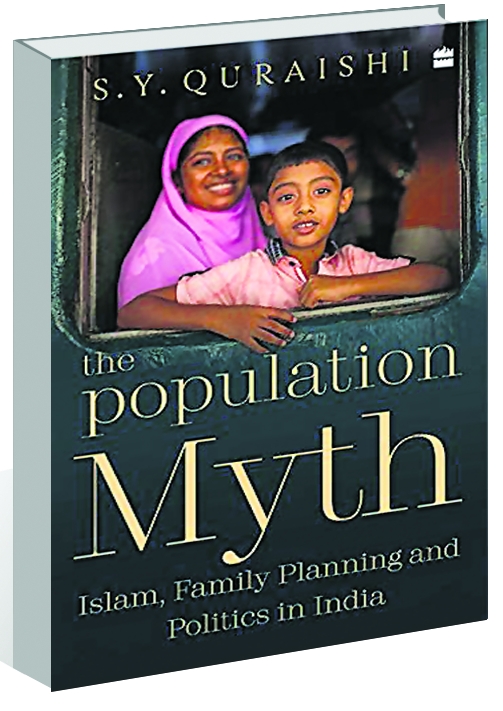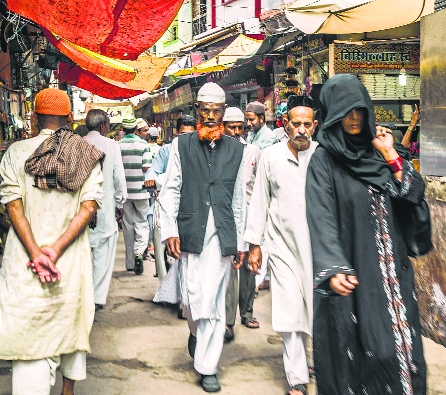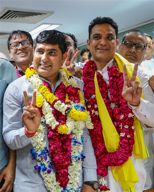
The Population Myth: Islam, Family Planning and Politics in India by SY Quraishi. HarperCollins. Pages 336. Rs499
Pamela Philipose
Nested within that large number of 1.38 billion people who comprise a country called India are other counts reflecting the presence of innumerable communities. From these, two particular sets of numbers need to be disentangled: those of Hindus in India, and those of Muslims. The populations of the two communities have become a source of manufactured anxiety at a mass level. In a profound sense, they have come to define the communally polarised politics of our times.

It is the need to address this competitive and obsessive weaponisation of numbers — ours versus theirs — that prompted SY Quraishi to write the book. In his avatar as Chief Election Commissioner, he was familiar with number crunching to determine electoral outcomes. Here he cites data to argue that a community’s numbers are determined not by communal strategies to carve out a larger presence for itself and therefore “defeat” the Other, but by complex and interlinking factors, including income and educational profiles, access to the media and health services. As he writes in the introductory note, the only way forward is to “remove misconceptions among our communities so that they may coexist in harmony”. He, therefore, sets out to dispel the myth propagated by right-wing Hindus that Muslims will outnumber the majority community in the near future — and tries to do this in a manner that is evidence-based rather than driven by emotional or political sentiments.
The book is not the work of a demographer, although the basics of the discipline are captured in its contents. One of the demographic paradoxes that mark India presently is called out in the book: falling birth rates amidst a rising population. There’s a simple explanation for this. India is in the third stage of its demographic transition, where its numbers continue to rise because 53 per cent of its population happens to fall in the reproductive age group of 15-49. The National Population Policy envisages India entering the fourth stage of its demographic transition around 2045, when a low birth rate coupled with a low death rate will result in population stabilisation. In fact, it is ‘population stabilisation’, rather than the more crass concept of ‘family planning’, that the world community set as its goal during the United Nations International Conference on Population and Development held in Cairo in 1994.
Quraishi rightly flags the importance in viewing population stabilisation through the prism of demographic transition in order to counter the reductionist logic employed by scare-mongers on population issues. The crucial point to note, as he explains, is that different states in India are at different stages of their demographic transition. Bihar, for instance, has a TFR (total fertility rate or the number of children a woman would give birth to during her reproductive years) of 3.0, in contrast to Tamil Nadu with a TFR of less than or equal to 2.1. This means that the fertility of Hindus is much higher in Bihar than that of Muslims in Tamil Nadu. If religion was the sole factor responsible for the “population explosion”, then the fertility of Muslims everywhere would be higher than that of Hindus everywhere.
The book has two major tropes. The first encapsulates the common prejudices about the Muslim community that are often expressed in casual conversations and which Hindutva hardliners have weaponised in pursuit of their divisive political agendas. In Chapter 5 entitled ‘Tenets of Islam and Family Planning’, Quraishi attempts to unpack and expose some of these. Take the much bandied about notion that Islam encourages polygamy. It circulates widely without a commensurate understanding that while Muslim family law in India may allow a man to have up to four wives, the Islamic scripture expressly demands that he may have only one if he cannot act equitably to all his wives. This is accompanied by the implicit recognition in the Quran that no man will be able to do perfect justice between wives even if it is his ardent desire to do so. Similarly, the belief that Islam encourages large families is also misplaced. According to Quraishi, there is “no text prohibiting birth control in the Quran”.
The other major trope is the argument that it is social and economic deprivations of Muslims, rather than religious or ideological factors, which account for the community having adopted contraceptive practices at a delayed and slower pace to that of Hindus. So while it is true that the population of Hindus has come down in seven decades in direct proportion to the increase in the minority population (4.3 percentage points and 4, respectively), it is also true that this trend is changing. In fact, if the growth rate of the Hindu population slowed down from 19.2 per cent to 16.76 in the decade 2001-2011, the slowing down of the Muslim population has been more pronounced — from 29.42 per cent to 14.6. In other words, the Muslim population is on the same trajectory of gradual decline as the Hindu population. This should be read along with the National Family Health Survey data from 1992-93 to 2015-16, which indicates that the pace of adapting to contraceptive behaviour has been faster among Muslims than Hindus.
Not all the arguments that Quraishi marshals are new, yet the book could prove an eye-opener for an emerging generation that has been drip-fed toxic opinion on the supposedly unstoppable growth of the Muslim population of the “hum paanch, hamare pachees” variety. To finesse his argument, Quraishi ends with a mathematical model prepared by two distinguished academicians: Dinesh Singh, a former Vice-Chancellor of Delhi University, and Ajay Kumar, a professor of KR Mangalam University. It demonstrates conclusively that the Muslim population in India will never exceed the Hindu population until eternity!
Apart from the occasional typo — on page 65, for instance, the word ‘billion’ is missing in the sentence “the population of India will stabilise at about 1.7 billion with 1.27 Hindus and 320 million Muslims, by the year 2101” — the book would have benefitted from a more gendered analysis. History shows us that women are not just vessels of reproduction who need to be “healthy for the sake of healthy children”, but agents of change, in and of themselves. While Quraishi does point to the importance of women’s education and deferred marriage, and refers to Islam’s emphasis on male-female equality, he misses an opportunity to highlight the importance of female agency and autonomy in shaping demographic outcomes.
Join Whatsapp Channel of The Tribune for latest updates.



























